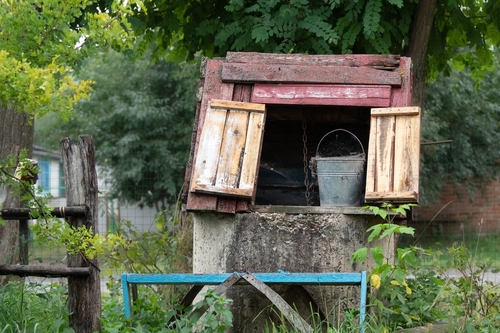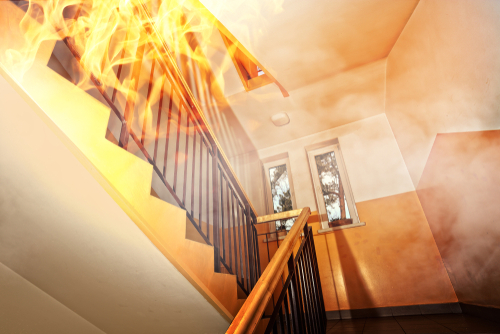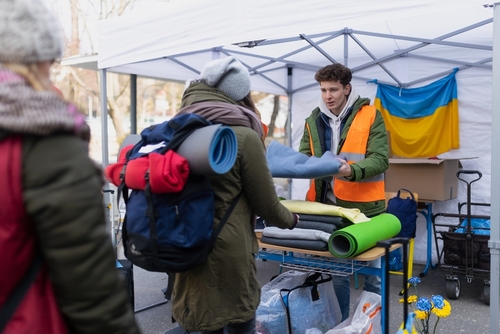What the Ukraine War Taught Us About Civilian Survival – Survivopedia

The war in Ukraine (2022–present) brutally reminded the world that modern life can shatter overnight. One day you have running water, electricity, and a safe home; the next, you’re melting snow for drinking water and huddling in a basement as missiles fall. Ordinary civilians in Ukraine—families in Kyiv high-rises, neighbors in rural villages—were thrust into survival situations most Westerners only imagine. Yet amid the chaos, they improvised ways to endure. Their experiences offer hard-earned lessons for preppers everywhere.
 Water: Sourcing and Rationing Life’s Most Vital Resource
Water: Sourcing and Rationing Life’s Most Vital Resource
When municipal water systems were knocked out by fighting, Ukrainians had to get resourceful fast. In besieged cities like Mariupol, all taps went dry early in the siege.1 Families suddenly found themselves collecting snow and rainwater to stay alive. One survivor described how on days of heavy shelling they couldn’t even venture out, so “our husbands collected snow and rainwater and boiled it” to have something to drink.2 In other regions, people turned to any available source. In Pokrovsk (eastern Ukraine), when a pipeline was cut off, engineers managed an improvised solution: pumping water out of defunct coal mines and filtering it with portable equipment.3 This desperate fix worked for a while, but when even that failed due to damage, residents fell back on a classic rural resource – wells.4 Throughout rural villages, private wells and hand pumps became lifelines as centralized systems collapsed.
 Even in cities that weren’t fully occupied, Russian strikes on power plants often shut down water treatment and pumping stations. In late 2022, millions across Ukraine experienced periodic water outages. Those who had stored water in tubs, cisterns, or bottles were a step ahead. In one frontline town (Lyman), a mother of two kept jugs of water in the basement alongside a woodstove and blankets, knowing that if shelling cut off access, her family had a backup supply.5 Sanitation, too, became a survival issue. After Chernihiv’s power was knocked out, one man found himself digging a makeshift latrine in the yard two days into the siege because the plumbing had failed—his high-rise apartment was suddenly “no light, no water, no heating and no toilet”.6 It was a stark lesson in how quickly modern conveniences can disappear in war.
Even in cities that weren’t fully occupied, Russian strikes on power plants often shut down water treatment and pumping stations. In late 2022, millions across Ukraine experienced periodic water outages. Those who had stored water in tubs, cisterns, or bottles were a step ahead. In one frontline town (Lyman), a mother of two kept jugs of water in the basement alongside a woodstove and blankets, knowing that if shelling cut off access, her family had a backup supply.5 Sanitation, too, became a survival issue. After Chernihiv’s power was knocked out, one man found himself digging a makeshift latrine in the yard two days into the siege because the plumbing had failed—his high-rise apartment was suddenly “no light, no water, no heating and no toilet”.6 It was a stark lesson in how quickly modern conveniences can disappear in war.
Takeaways – Water
Everyday Ukrainians learned the hard way that water is truly life. To be prepared:
- Store ample water in your home for emergencies (at least 1–2 gallons per person per day for 2+ weeks).
- Cache water in multiple ways: fill bathtubs or barrels when a crisis is looming; keep some sealed bottled water, and consider a rainwater catchment system if possible.
- Equip for purification: have a portable water filter, water purification tablets, and fuel for boiling water. In Ukraine, boiling snow or rainwater made it safer7 – you should be ready to do the same.
- Identify sources near you: know the location of ponds, rivers, or public wells, and keep basic tools (wrench, siphon hose) to access water heaters or pipes in a pinch. People survived Mariupol by scrounging water wherever they could – preparation will give you an enormous advantage.

 Communication: Staying in Touch When the Grid Goes Down
Communication: Staying in Touch When the Grid Goes Down
When war knocked out cell towers and internet service, Ukrainians discovered that old-school communication tools suddenly became invaluable. In many besieged areas, mobile coverage and internet access vanished, leaving people in an information blackout. “We felt we were cut off from the entire world,” recalled a Mariupol resident of the first days of siege when phones went dead.1 In this void, basic battery-powered radios emerged as literal lifesavers. Communities that had portable radios tuned in to get news and crucial updates. In fact, Ukrainian families trapped under occupation recount how radio broadcasts guided their decisions: one family in Hostomel (a suburb of Kyiv) spent a week hiding in their cellar until they started listening to a little transistor radio. Through it, they learned about relatively safe evacuation routes (“green corridors”) and enemy movements, information that helped them escape safely.8 9 Others in cities like Izium and Mariupol similarly “listened to the radio and found their way to safety, thanks to the information they received. Radio saves lives.”.10 It’s telling that in some occupied towns, people frantically searched their attics for any long-forgotten radio and spare batteries.11 In the age of TikTok, Ukraine’s war brought back the relevance of WWII-era tech: the humble FM/AM radio and word-of-mouth communication.
With phones down, face-to-face messaging filled the gap. Neighbors would relay news to each other on the street or by knocking on doors. In many high-rise apartment blocks, residents formed group plans—agreeing that if communications failed, they’d meet at a certain time or place each day to share news. In some cases, messengers were sent: for example, someone with a working car or a bicycle might venture to an area with reception to make calls on behalf of others, or to retrieve updates from officials. In the absence of official channels, human networks became the channels. What limited communication remained was often low-tech: handwritten notices on walls about evacuation buses, or volunteers with megaphones announcing aid deliveries.
Takeaways – Communication
The Ukrainian experience shows that when the digital grid goes dark, you need analog backups. Consider these steps:
- Own a battery-powered or hand-crank radio. Pre-tune it to emergency frequencies and keep spare batteries. It could be your only link to the outside world.11
- Get walkie-talkies (two-way radios) for your family or group. In an urban neighborhood, even cheap FRS/GMRS radios can let you coordinate if cell service is out.
- Have an emergency contact plan. Don’t count on phone apps. Decide on meetup spots and check-in times with family. Keep a list of important addresses and phone numbers written down in case your phone dies.
- Learn basic ham radio or CB radio use. If you’re ambitious, a ham radio license and portable unit can reach help when nothing else works. In conflict zones, many amateurs and volunteers pass critical info this way.
- Invest in signal boosters or satellite messengers. Some Ukrainians used satellite internet (like Starlink) to reconnect communities. A personal satellite communicator could send a lifesaving message if infrastructure is down.
Above all, don’t rely solely on the internet or cell network. When they failed in Ukraine, those who had a radio or a prearranged communication plan with neighbors coped much better than those who didn’t.

 Escape and Evacuation: Knowing When and How to Get Out
Escape and Evacuation: Knowing When and How to Get Out
War in Ukraine showed how important it is for civilians to bug out early and how dangerous procrastinating can be. Cities like Mariupol, Kharkiv, and Irpin went from peace to full-scale assault in hours, trapping those who hadn’t fled. In Mariupol, many families believed fighting wouldn’t reach them until it was too late. “We did not believe war was happening…we constantly read the news, hoping it would be over soon. But it only got worse,” one survivor said.1 By mid-March 2022, escape was a life-or-death gamble. When a brief window opened, one woman’s husband organized a small convoy of cars. “One morning, my husband came and said that we were leaving… he’d organised for other people to leave at the same time, so there were several cars,” she recounted. They drove through the ruins of their city, praying they wouldn’t be shot, and managed to reach safety hours later.12 The lesson? Don’t wait until the last minute. As preppers say: if you leave early, you can always turn back if it’s a false alarm—but if you leave too late, you might not make it out at all.13 14
Thousands of Ukrainians who did escape in time had one thing in common: they grabbed their go-bags and ran. Many had packed essentials in advance during the tense weeks before the invasion. Those who didn’t often regretted it. A young couple from Kharkiv recalled how they hesitated and delayed evacuating; when the bombardment became unbearable, they finally fled by train. In the rush, they took almost nothing beyond some water and the clothes on their backs. “It’s hard to pack your survival bag while panicking,” the wife admitted. “Now I understand why smart people said to pack it before the war.”15 When you’re already hearing explosions, it’s too late to calmly decide what to bring. Others faced the brutal choice of what (and whom) to take. Pets, for example, became a heartbreaking dilemma. Many Ukrainians stayed in dangerous areas longer than they should have because they couldn’t abandon their dogs or cats. “After figuring out what to do with their families, the hardest question many grapple with is what to do with their pets,” observed one volunteer in Irpin, noting he met numerous locals who simply would not leave without their animals.16 Some volunteer evacuators encouraged people to bring the pets along if possible rather than risk their lives by staying.17
Takeaways – Escape
If war or any disaster strikes, having a plan and acting early can save your life. Key points include:
- Plan multiple evacuation routes now. In Ukraine, main highways jammed or came under fire. Know at least two or three ways out of your city (back roads, walking paths, etc.), and keep maps handy (don’t rely on GPS).
- Prepare a bug-out bag for each family member in advance. Include vital documents, some cash, medicines, basic food/water, a change of clothes, flashlight, and other survival gear. Pack as if you’ll have to leave in 5 minutes – because many did.
- Keep your vehicle ready. Maintain at least half a tank of fuel at all times if you can. In an invasion or crisis, gas stations either run dry or have mile-long lines. If you have no car, identify a friend or neighbor with one, or local authorities’ evacuation points.
- Practice “go” decisions. Decide your personal red lines. For example: “If conflict (or disaster) is reported within 50 miles, we leave.” This reduces second-guessing. Normalcy bias (“it won’t happen here”) trapped many in Ukraine.18 19 Be willing to move when others are still debating.
- Account for family and pets. Have pet carriers and supplies ready to go. Make sure everyone in your household knows the plan – where to meet if separated, who grabs what. If you have elderly or disabled family, arrange how to evacuate them before an emergency.
- Team up if possible. Convoys like the Mariupol group show there’s safety in numbers.12 Coordinate with neighbors or relatives to leave together, which can deter looters on the road and provide mutual support.
Finally, always keep a listen for official evacuation advisories, but don’t rely on them alone. Be proactive. As one prepper wisely put it, “the time to bug out is before the masses do”.19

 Shelter: Fortifying Homes, Basements, and Bunkers
Shelter: Fortifying Homes, Basements, and Bunkers
When running wasn’t an option, Ukrainians hunkered down and turned their homes and basements into fortresses and lifelines. This war has been as much about enduring as escaping. Civilians learned how to harden their shelters on the fly. In apartment blocks from Kyiv to Kharkiv, residents taped up windows to reduce shattering from blasts, pushed furniture against walls, and identified the safest interior spaces (usually corridors or bathrooms away from exterior walls). But in heavy bombardment, often the only safe place was underground. Across Ukraine’s cities and towns, basements, cellars, and bomb shelters became second homes. In Lyman (Donetsk region), for example, constant shelling meant Tetiana’s family kept their basement door open 24/7 – they might need to sprint below ground at any moment.20 They outfitted that basement with a small wood-burning stove (“potbelly stove”), firewood, stored water, warm blankets and clothes.21 For months during occupation, they sometimes lived in that dark, damp cellar for days at a time, only dashing upstairs when the lull in fighting allowed them to cook or fetch well water.22 For her children, the basement was scary at first, but it soon became the normal bedroom. In countless other cases, neighbors turned basements of schools, churches, and public buildings into communal shelters, cleaning them out and equipping them with stoves and makeshift toilets. In Kyiv’s high-rises, residents sheltered in parking garages or metro stations overnight, then returned to their apartments during the day. Any shelter is only as good as the supplies you stock in it. Ukrainians who prepared their hideouts with food, water, and heating had a far easier time.23 24 That level of preparedness became the difference between mere survival and something resembling livable conditions.
Fortifying a shelter also meant tackling problems of heat, power, and sanitation. In winter, lack of heat was potentially deadly. Many urban Ukrainians obtained camping stoves, generators, or battery-powered heaters. Others reverted to burning wood or coal in metal barrels or improvised stoves, even inside partially-destroyed buildings (with ventilation jury-rigged for safety). Rural families often had woodstoves or fireplaces and stockpiled firewood. In the city of Mariupol, families with no gas or electricity built outdoor fires for cooking and warmth. One group sheltering in a kindergarten basement set up a “field kitchen” outside on a wheelbarrow frame, where men lit fires to cook soup and boil water for dozens of people.2 They scrounged any burnable materials to keep the fire going. Lighting was another issue: flashlights and candles were gold. Many used car batteries or power banks to charge phones or radios occasionally. As weeks of war turned into months, even candles became scarce, teaching the value of storing plenty of backup lighting. Sanitation required creativity. As noted, people dug outhouse pits in yards, lined buckets with garbage bags as indoor toilets, and used chlorine or lime to neutralize waste.6 In crowded basements, hygiene was a challenge – many got by with baby wipes and limited water for sponge baths, emphasizing the need for wet wipes, sanitizer, and basic medical kits in any shelter.
Physical fortification was also improvised. Civilians filled sandbags and reinforced basement ceilings with wooden beams or even books to buffer shrapnel. In village houses, some folks boarded up windows with plywood or removed important belongings to interior rooms expecting outer walls might be hit. Others dug trenches in their gardens to lie in during extremely heavy shelling. Essentially, whatever could be done to absorb blasts or provide cover, people tried it. Not every effort was effective (no basement could survive a direct hit), but even psychological protection matters. Taking action to fortify your space gives a sense of control and can reduce panic. Ukrainians found that a well-organized, provisioned shelter not only kept them alive but also kept them sane by creating a routine in chaos.
Takeaways – Shelter
Your home can quickly turn from castle to trap in a disaster—unless you prepare. Here’s how to apply Ukraine’s shelter lessons:
- Identify your safest room or shelter area now. Ideally an inner room or basement with no windows. Clear it out and stock it with emergency supplies (water, food, first aid, lights, radio, etc.). If you don’t have a basement, know the nearest public shelter (and keep a key to the building if possible).
- Strengthen entry points: Install heavy-duty locks and reinforce doors if you anticipate lawlessness. In war, some Ukrainians faced looters once order broke down. Even basic door bars or braces can buy you peace of mind.
- Prepare for heat and power loss: Have alternatives for heating and cooking that don’t rely on the grid. A propane camp stove or kerosene heater (and fuel), a solar phone charger, plenty of batteries – these aren’t luxuries, they’re lifesavers when the power is out for weeks. If you have a wood stove or fireplace, stock up on fuel.
- Store sanitation supplies: A portable camp toilet or even a bucket with lid, trash bags, bleach, and toilet paper will be worth their weight in gold if water/sewage systems fail. Likewise, store hygiene items: soap, wipes, feminine products, etc. Illness can spread quickly in cramped conditions, so cleanliness is part of survival.
- Think structural safety: If you expect literal bombardment or tornado-force winds, consider basic fortifications. Sandbags or filled garbage bags can reinforce windows and walls (at least against debris). Know how to shut off your utilities (gas, water, electric) to prevent fires or flooding if damage occurs.
- Drill and practice: Make sure your family (especially kids) knows what to do when the sirens wail or when a storm is approaching. In Ukraine, children learned to grab their “emergency backpack” and rush to the cellar in seconds. Regular drills make the response automatic and reduce panic when it’s real.
Your shelter is your refuge. Stock it, fortify it, and plan to live there for an extended period if necessary. As Ukrainians showed, it’s possible to turn even a dank cellar into a lifeline with enough preparation and will.

 Community: Neighbors Helping Neighbors
Community: Neighbors Helping Neighbors
One of the most inspiring aspects of Ukraine’s civilian survival was the power of community resilience. While preppers often emphasize individual readiness, the war showed that having trusted neighbors and local networks can make the difference between life and death. In city apartment blocks and rural villages alike, people came together to share resources, skills, and information. For example, in Mariupol when supplies ran out and all stores were closed, one supermarket (the last one open) became a focal point for the neighborhood. There, locals self-organized a system to avoid chaos: they set up a list so people could take turns buying what little was available, rather than stampeding the shop.25 Prices skyrocketed, bread disappeared, and tempers were high, but this bit of community organizing imposed some fairness and prevented violence over food. Neighbors also bartered amongst themselves—trading extra candles for some flour, or a bit of diesel fuel for a few liters of potable water.
In frontline towns like Orikhiv, with shelling day and night, community basements became not just shelters but social hubs. In one large shelter under a school, volunteers like Svitlana (a local social worker) helped set up a space where “people can shower, wash clothes and eat a meal” together.26 These communal shelters provided not only physical safety but emotional support—residents would share tea, tell stories, celebrate small occasions, and look after each other’s children. “Companionship in basements” kept spirits up even as war raged overhead.27 In the capital Kyiv, when the power was out for long stretches, community volunteers created “Points of Invincibility” – essentially warming centers with generators, hot drinks, and internet, open to all. This concept, supported by local businesses and officials, gave millions of people a place to charge their phones, get news, and feel human for a moment during harsh winter blackouts. It was community solidarity in action.
Rural communities often fared better thanks to tight-knit ties and self-reliance. Neighbors in villages pooled their resources: one might have a working well, another a generator, another extra vegetables from a cellar. By sharing, they all got by. There are accounts of farmers helping evacuate towns by driving convoys of cars and tractors to pick up anyone stranded. In western Ukraine, residents took in huge numbers of displaced families from the east, often complete strangers, simply because it was the right thing to do. That hospitality saved innumerable lives in the bitter early weeks of the invasion.
Crucially, community support also acted as a security force. In many areas, local civilians formed watch groups to prevent crime and defend against saboteurs. In the absence of police, they patrolled streets at night, organized checkpoints, and kept an eye on vulnerable neighbors (like the elderly living alone). In Mariupol, the men in one neighborhood shelter took turns standing guard on the street when there was a lull in fighting.28 Just their presence deterred would-be looters and also allowed them to sound the alarm if danger approached. This kind of grassroots defense isn’t often talked about in prepping, but Ukraine proved its worth.
Takeaways – Community
Self-sufficiency is important, but no one survives alone in the long run. Building community resilience is as critical as stocking your pantry. Here’s how you can foster it:
- Get to know your neighbors now. Exchange phone numbers or radios, discuss basic plans. In a disaster, these are the first people who will either help you or need your help. A simple neighborhood meeting about emergency readiness can lay a foundation of trust.
- Create a mutual aid group. Identify folks on your street or in your building with useful skills (medical, mechanical, etc.) and resources (maybe someone has a generator, another has a well). Talk about pooling efforts if things go bad. You might be surprised – many people want to help if someone takes the lead.
- Share information and resources. In Ukraine, those with generators ran charging stations for others; those with extra food opened communal kitchens. Plan for similar sharing: if you have abundance of an item, trade or gift it to strengthen bonds. Likewise, set up a way to communicate locally (a bulletin board or signal) for news updates.
- Organize security if needed. Community defense doesn’t mean vigilantes; it means looking out for each other. Something as simple as a nightly fire watch or patrol in a blackout can keep everyone safer. Coordinate with willing neighbors to take shifts keeping watch. And if you hear an alarm or call for help next door, respond – you’d want them to do the same.
- Stay human – little things matter. Brew an extra pot of coffee for the block, host a meal from combined supplies, mark birthdays or holidays even in tough times. Boosting morale is a survival tool, too. Banding together not only multiplies practical resources, it also multiplies hope.
The Ukrainian people showed that communities who stand together can endure the unendurable. As a prepper, don’t just aim to be the lone wolf survivor; aim to be the one who can lead and support those around you. In a crisis, a neighborhood of prepared, cooperative citizens is far stronger and safer than any one person on their own.

 Psychological Resilience: Enduring Fear, Loss, and Stress
Psychological Resilience: Enduring Fear, Loss, and Stress
Survival isn’t just about physical needs—it’s also about mental fortitude. The Ukraine war inflicted profound psychological stress on civilians: constant fear from shelling, grief for lost loved ones, uncertainty day after day. Yet many Ukrainians displayed remarkable resilience amid these conditions, and their coping strategies offer guidance for all of us. A common theme was purpose and determination. People found strength in having a role to play—whether it was a mother holding her family together, a grandfather protecting the home, or a volunteer aiding others. Eighty-four-year-old Alla, who had already lived through World War II, exemplified this spirit. In 2022, when her nursing home was hit by rockets, she refused to succumb to despair. Instead, she focused on helping care for other residents and even took comfort in tending to her pet dog. “We have to live, to not give up and support others,” Alla said firmly.29 Her vibrant, mindful approach to each day—reading books, reminiscing about better times, sharing a smile with others—became her shield against the trauma surrounding her. Helping others proved to be a powerful antidote to fear.
Many Ukrainians also coped by leaning on faith, hope, and small joys. Some found solace in prayer. A family evacuating Mariupol described how they “drove and prayed all the way” out of the city, believing that their prayers gave them a chance to survive.30 Others took hope from signs of normalcy: a blooming flower in the ruins, a favorite song on a battery radio, children laughing while playing in a bunker. Keeping a positive focus, even symbolically, was crucial. People celebrated tiny victories—“Today we found some apples for the kids” or “Our building survived another night”—reinforcing gratitude and hope. Humor was another survival tool. Ukrainians often used dark humor about the enemy and the situation to deflate fear. Jokes shared in shelters gave stressed civilians a brief emotional release.
At the same time, acknowledging feelings was vital. Those who bottled up fear and panic sometimes made rash decisions or froze when action was needed. Ukrainian psychologists advising civilians encouraged them to talk about their fears with others in the shelter, to cry when necessary (out of the enemy’s sight, as one resident quipped), and then to pick themselves up and keep going.31 The long duration of the war—now years—taught people the importance of routine and mental breaks. In between air raid alerts, people tried to resume pieces of normal life: children drew pictures and did schoolwork; adults repaired homes or cooked meals as if it were a normal day. Routine fights off the mental paralysis of uncertainty. For preppers, this highlights that in a protracted crisis, you must manage stress actively: establish a daily schedule, set small goals, and create moments of rest or distraction (reading, music, exercise) to recharge your mind.
Finally, community again plays a role in psychological resilience. Social support is one of the strongest buffers against trauma. In Ukraine, families, friends, and even strangers became each other’s therapists in a way—listening, encouraging, sharing burdens. As Alla noted, just knowing “amazing people” around her who keep a positive outlook made her glad to be alive.32 33 If you face a disaster, surround yourself (if you can) with people who uplift you, and be an uplifter yourself. Leadership in a crisis often simply means showing confidence and compassion, which inspires others to follow. Psychological resilience can be contagious.
Takeaways – Mental Resilience
Your mindset in crisis can save your life just as much as your supplies. Here’s how to cultivate it:
- Have a mission or role. Decide now what your purpose will be if disaster strikes. Are you the protector, the medic, the organizer? Focusing on how you can contribute keeps you out of the victim mentality and gives you drive.
- Practice stress-coping techniques. This could be breathing exercises, prayer, or even just remembering a calming mantra. Train yourself to stay cool under pressure with drills or simulations. The more you’ve faced controlled stress (through training, serious hobbies, etc.), the better you’ll handle real chaos.
- Build a routine in chaos. Even if you’re living in a bunker, make a daily schedule for meals, chores, and relaxation. Routines give a sense of control. Include something positive each day – like reading to your kids or doing a few exercises – to mark the day as more than just surviving.
- Stay connected with loved ones. If you’re separated, try to communicate when possible (even through letters or messengers). If you’re together, talk to each other and especially listen. Supporting others will also heal you.
- Embrace adaptability and humor. Laugh when you can – it’s free medicine. Be ready to change plans and improvise; rigidity causes panic when things inevitably go sideways. Mentally prepare for things to get worse before they get better, as this war has shown. But also believe that you can endure. History is full of ordinary people surviving extraordinary trials, largely through endurance and willpower.
Conclusion: Be Ready to Lead
The war in Ukraine taught a grim but empowering truth: civilians are always on the front lines when systems collapse. In today’s world, that could happen via war, natural disaster, cyberattack on infrastructure, or any major crisis. The question is, will you be prepared to protect yourself and help those around you? The Ukrainian survivors we’ve discussed were not super-soldiers or trained preppers; they were teachers, IT workers, farmers, grandparents, kids. They suffered greatly—but those who made it through did so by quickly adopting a survival mindset and using every tool at their disposal. We in the West must not look at their story and think “that could never be us.” Instead, we should think, “If that were me and my town, would I know what to do?”
 Take the lessons of Ukraine to heart: store water and supplies as if your life depends on it (one day, it might). Organize your household and community for mutual resilience. Plan for communication blackouts and have backups. Know your evacuation routes and have your bag ready before the storm hits or the tanks roll in. Fortify your shelter and your psyche for the long haul. And perhaps most importantly, be the one who others can turn to—the neighbor with a spare battery or warm meal, the friend who keeps calm and says “we’ve got this” when everyone else is in shock. In every Ukrainian neighborhood under fire, someone stepped up to lead and care for others, whether they intended to or not.
Take the lessons of Ukraine to heart: store water and supplies as if your life depends on it (one day, it might). Organize your household and community for mutual resilience. Plan for communication blackouts and have backups. Know your evacuation routes and have your bag ready before the storm hits or the tanks roll in. Fortify your shelter and your psyche for the long haul. And perhaps most importantly, be the one who others can turn to—the neighbor with a spare battery or warm meal, the friend who keeps calm and says “we’ve got this” when everyone else is in shock. In every Ukrainian neighborhood under fire, someone stepped up to lead and care for others, whether they intended to or not.
War is closer than we think, and even if it never comes to your doorstep, some crisis will. Don’t wait for authorities to save you; often, they can’t. You are your own first responder, and possibly the first responder for your whole block. The ultimate prepper mindset isn’t about paranoia or hoarding—it’s about responsibility. It’s saying: if the worst happens, I’ll face it head-on and help others through it. So stock up, team up, and steel yourself. Be that steady hand in the dark, the prepared neighbor who can lead when everyone else is lost. The experiences of Ukrainian civilians are written in blood and courage. Learn from them, act on them, and be ready to lead when fate calls. Your community is counting on you, whether they know it or not.
Read the full article here









